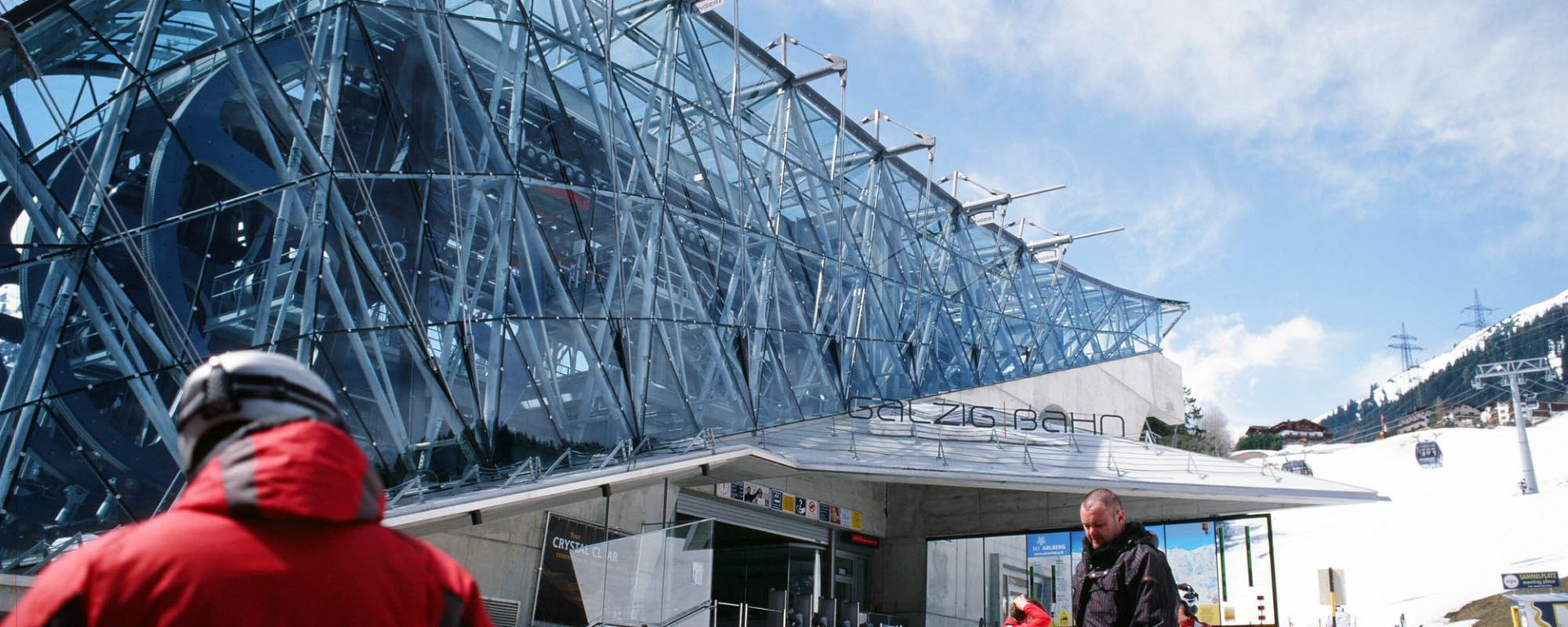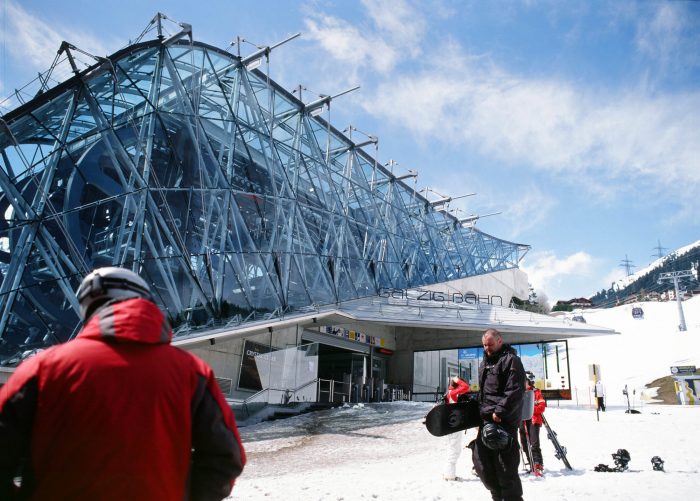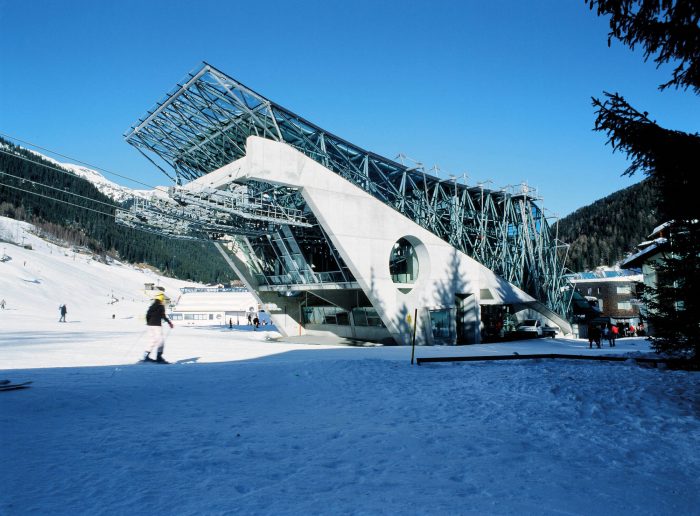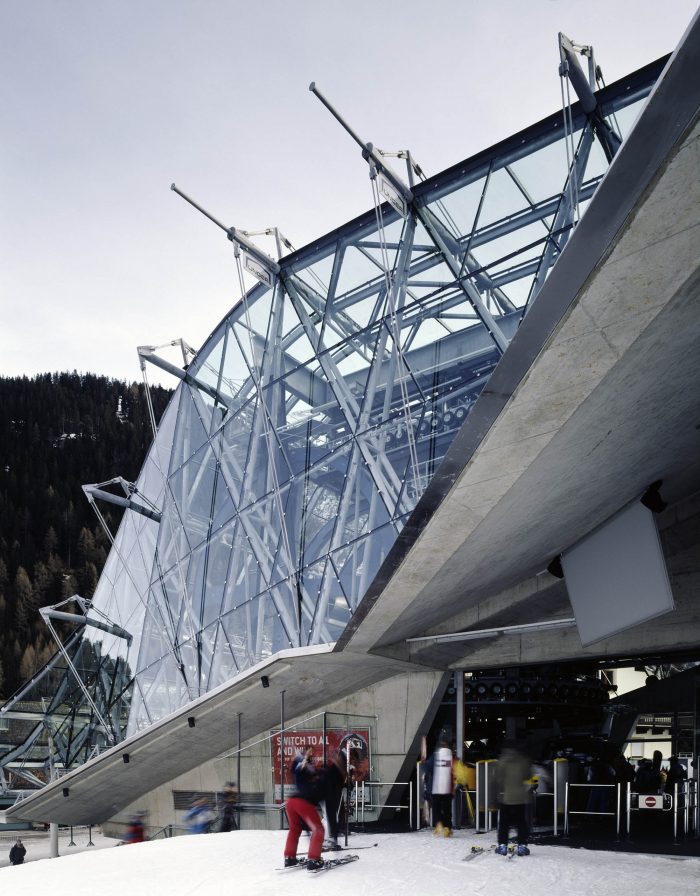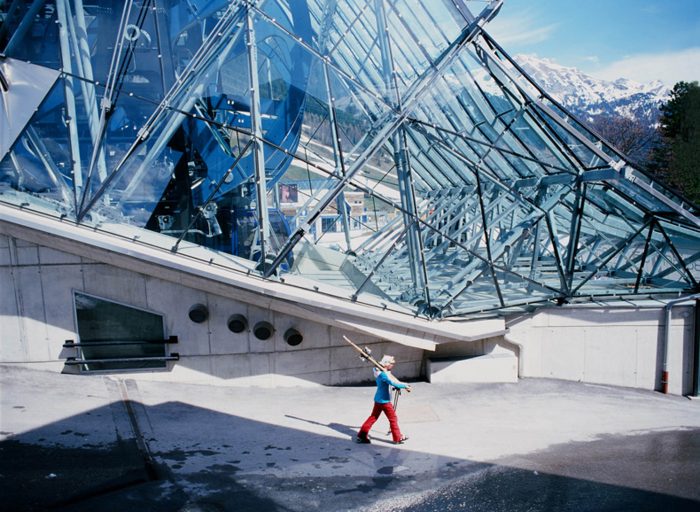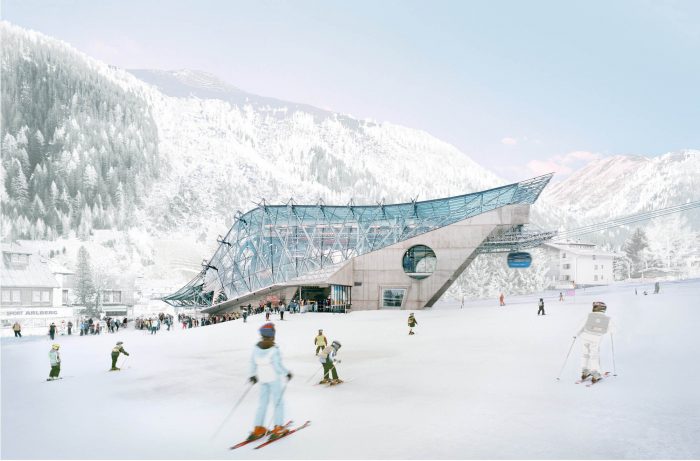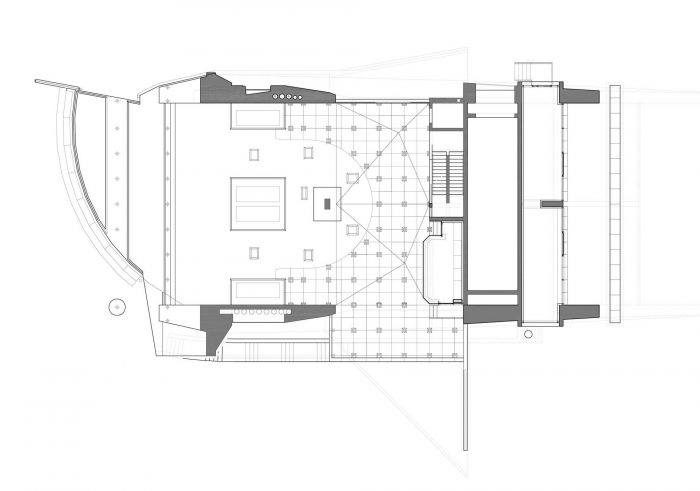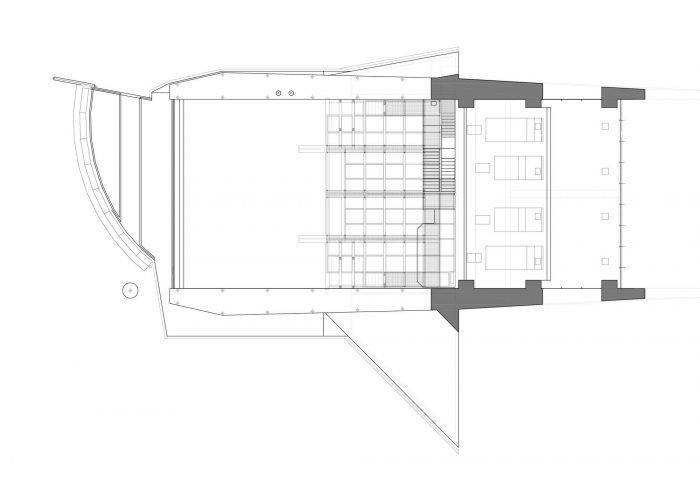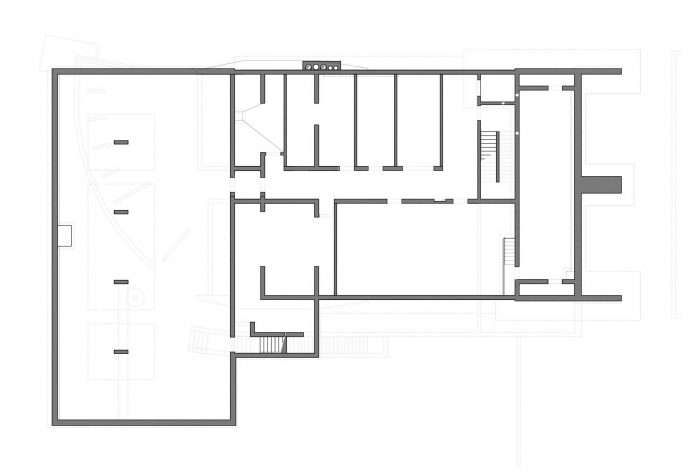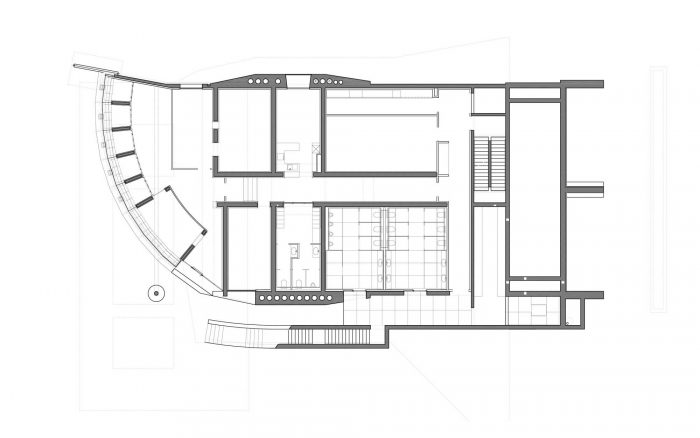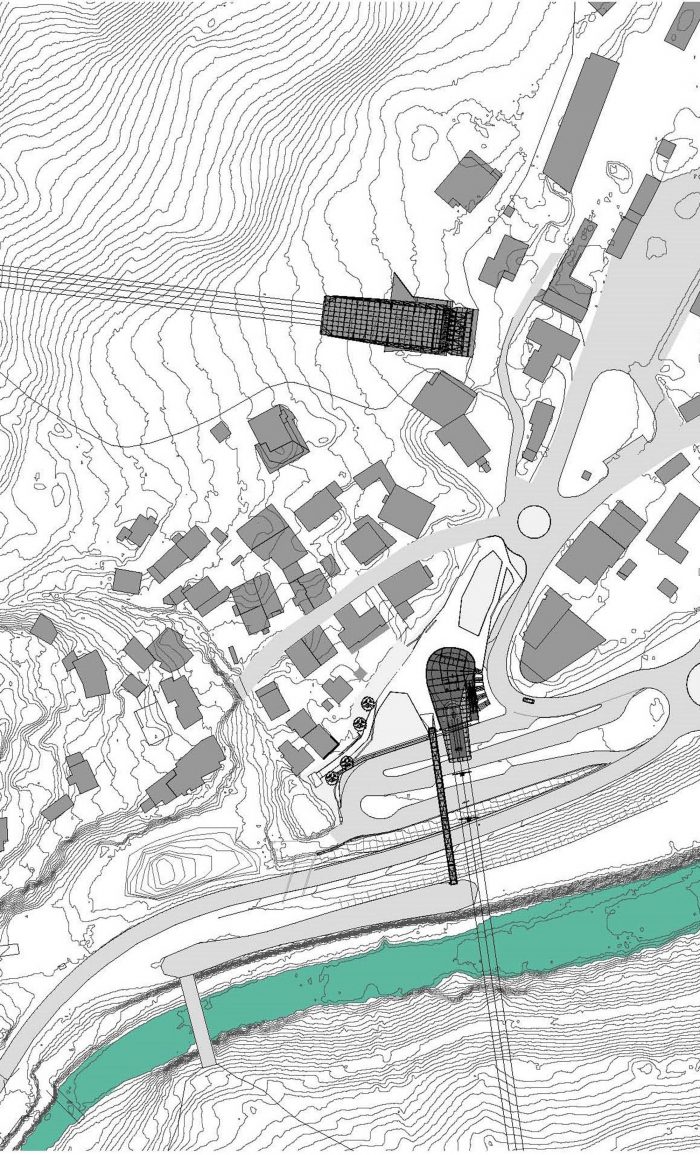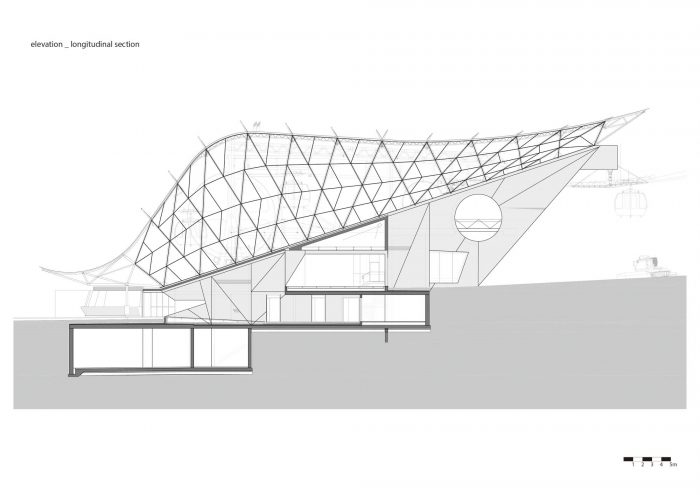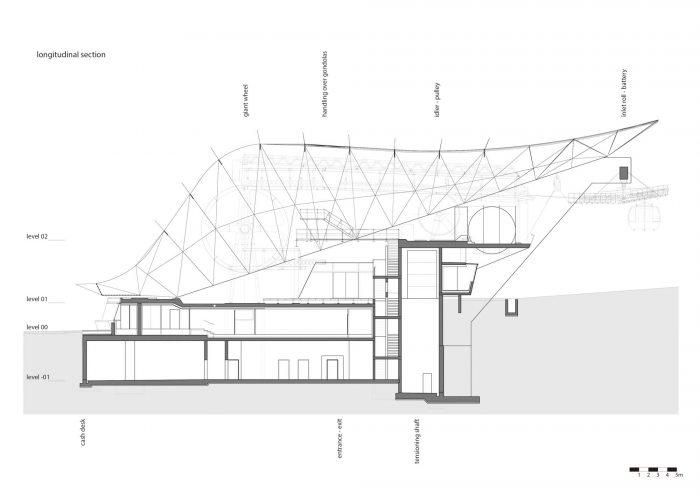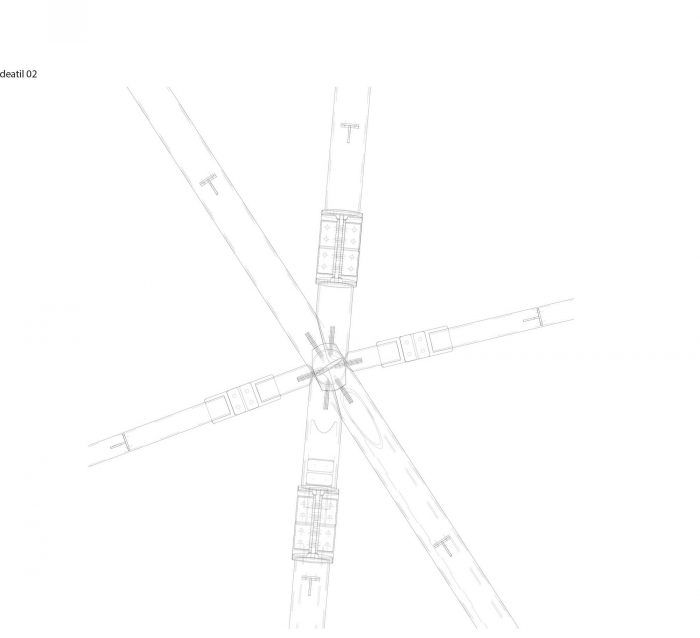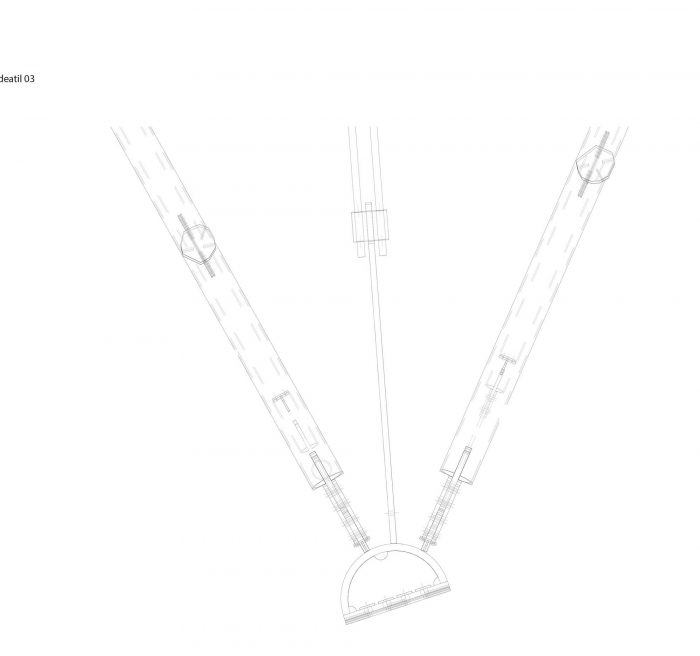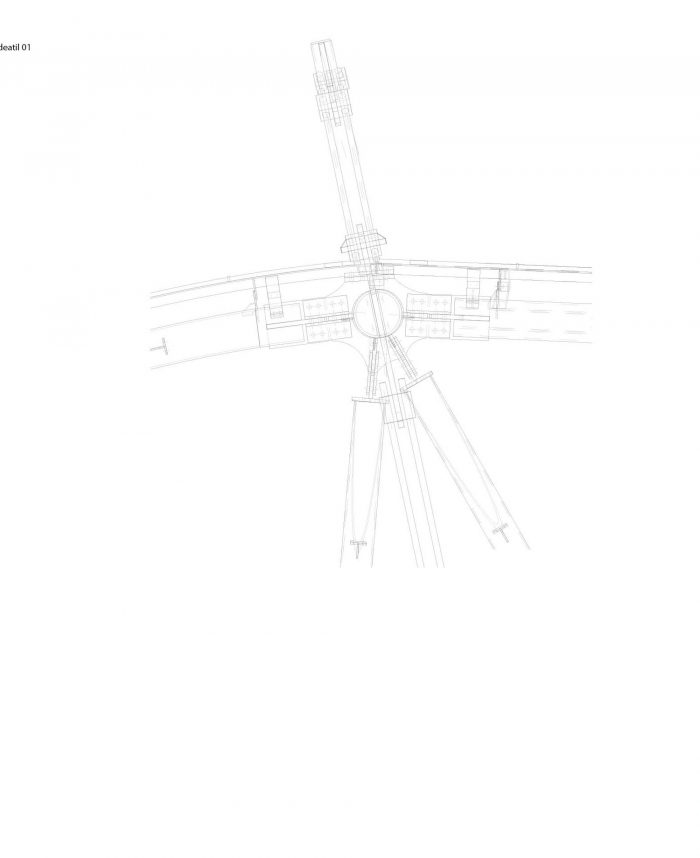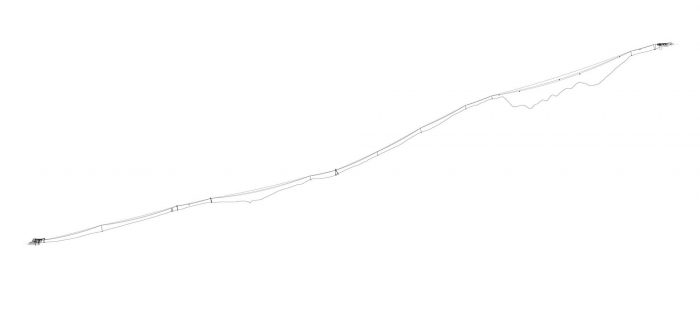蒂罗尔(奥地利)的圣安东–一个有着悠久滑雪旅游传统的村庄–从2006/2007年冬季开始有了新的建筑地标。这个村庄再次证明了它对建筑新方法的开放性。
玻璃、钢、混凝土–乔治-迪瑞尔(Georg Driendl)在表达他对建筑的看法时,强烈拒绝空洞无意义的美学过度形式化的时尚。清醒的原料,但又是感性的组合。新基站的形式直接从它所要实现的运输功能中演变出来。对可读性和透明度的渴望决定了材料的选择。玻璃揭示了技术的内涵,并预示着上山的旅程。混凝土为建筑提供了基础,将其固定在斜坡上,形成了一个配重,并作为空间桁架的载体(以三角支撑和尽可能的丝状结构组织),承担了屋顶的重量。
空间桁架的可见结构(包括其支架和选择的型材)直接根据当时的风向和天气条件而变化,始终保持着对风、雨和雪的关注。
St. Anton in Tyrol (Austria) – a village with long tradition in skiing tourism – has a new architectural landmark, starting with the Winter-Season 2006/2007. The village once again proves its openmindedness for new ways in architecture.
Glass, steel, concrete – favoured materials when Georg Driendl expresses his views of an architecture which strongly refuses the fashion of hollow and meaningless aesthetical over-forming. Sober feedstock, yet sensual in its combination. The form of the new basis station directly evolves out of the transport function it has to achieve. The desire for readability and transparency defines the material choice. Glass reveals technical inner life and previews the trip up to the mountain. Concrete grounds the construction, anchors it into the slope, creates a counterweight and is a carrier of a space truss (organized in triangulated bracing and as filigree as possible) which carries off the weight of the roof.
The visible construction of the space truss (with its riggings and the chosen profiles) directly evolves from the prevailing wind- and weather conditions, always standing in attention to defy wind, rain and snow-masses.
然而,巨大的混凝土基座上的新玻璃罩看起来很美,因为它以优雅的驱动力进入山谷,既不走大胆的建筑钢丝,也不只是技术设备的普通住宅。这是建筑发展与技术革新携手并进的难得局面,建筑是技术的平等伙伴,甚至是技术的催化剂。
移动的建筑巧妙地描绘了Galzigbahn令人印象深刻的新的运动路线,极简主义。缆车进入建筑后,一个巨大的轮子将其引向一个点,使客人能够在地面上进入建筑。轿厢转向相反的方向:乘客和缆车一起被抬起来,通过玻璃空间漂浮在乡村屋顶景观之上,到达Galzig(山)。Driendl*建筑师将旋转的建筑包装成Galzigbahn的象形图,乘客通过缆车征服空间,从内部开始,然后是外部,直到空间界限模糊。功能性建筑的生动和感性得到了充分的体现。
Still, the new glass hood above the massive concrete pedestal looks beautiful as it enters the valley with an elegant drive and neither walks a daring architectural tightrope nor is it just a plain home for the technical devices. It’s one of those rare situations when architectural developments and technological innovation work hand in hand, where architecture is an equal partner of technology, even its catalyst.
The moved architecture paints, skilfully minimalist, the impressive new course of motions of the Galzigbahn. The gondola enters the building and a giant wheel leads it to a point which enables the guests to enter it on ground level. The cabin turns into the opposite direction: the passengers get lifted, together with the gondola, and float above the rural roof-landscape to the Galzig (the mountain), through glassed space. The passenger conquers space through the cable car, starting with the inner, followed by the outer, until spatial limits blur. driendl*architects packed the swung building into a pictogram of the Galzigbahn. Functional architecture as vivid and sensual as it gets.
设计说明
缆车站的建设,包括旁边的设施 付费台区域的公共空间 储存、物流、废物管理设施和地下室的车库。客户。Arlberger Bergbahnen AG, Boznerplatz 6, 6020 Innsbruck.
外部建筑
车身由一个巨大的混凝土基座组成,基座浮在两面墙上(南北两面),上面有一个玻璃结构。这层风雨衣横跨在整个站房上,自我支撑,不需要任何接触点–这要归功于新建造的圆棒支撑结构,一种空间桁架(以三角支撑组织),它将屋顶的重量转移到钢混凝土结构中。为了使空间桁架看起来尽可能的丝丝入扣,钢筋的强度得到了优化。
混凝土基座的质量为牵引缆绳提供了配重,因为它的角度随着坡度的增加而增加。
Specification
Building of a cable car station including side facilities Public spaces in the pay desk areas Storage, logistics, waste management facilities and garage in the cellar. Client: Arlberger Bergbahnen AG, Boznerplatz 6, 6020 Innsbruck
External Construction
The body consists of a massive concrete pedestal which floats into two walls (north and south) and is overarched by a glass construction. This weather protection coat is spanned, self-supporting, over the whole station and needs no contact points – due to a newly constructed supporting structure of round bars, a sort of space truss (organized in triangulated bracing) which carries off the weight of the roof into the steel concrete construction. To make the space truss appear as filigree as possible the strength of the bars has been optimized.
The mass of the concrete pedestal builds the counterweight to the traction cable, because of its increasing angle according to the slope.
客人的入口位于北面的墙壁上,在那里,一个钢混凝土三角形起到了防风雨的作用。这个屋顶还提供了广告插页的空间。由于透明的外衣和移动的办公房间(之前已经放入建筑中),缆车以及入口区域(现金台)成为了关注的焦点。玻璃罩描述了一个优雅的曲线,同时漂浮在巨大的混凝土墙壁上,进入山谷。
空间概念
28间小屋/每间24人
最大速度6米/秒
The entrance for the guests is situated on the northern wall, where a steel concrete triangle functions as a weather protection. This roof also provides space for advertising inserts. Due to the transparent coat as well as the shifted office rooms (which have been put into the building before) the cable cars as well as the entrance area (cash desk) is in the centre of attention. The glassed hood describes an elegant curve while floating over the massive concrete walls into the valley.
Spatial Concept
28 cabins / 24 persons each
Max Speed 6 m/s
缆车进入建筑后,一个巨大的轮子将其引向一个点,使客人能够第一次在地面上进入建筑。
The gondola enters the building and a giant wheel leads it to a point which enables the guests to enter it on ground level, for the first time.
悬索的第一根柱子与基础终端融为一体,因此保证了无障碍的全景视野。有节奏的光线追踪支持着动态的空间体验。乘客离开阴影的入口区域,进入大厅的光照宽度,并见证了一个气势磅礴的缆车进出的技术游戏。
The first column of the suspension cable is integrated into the basis terminal and so guarantees an unhindered panorama view. A rhythmic light tracing supports the dynamical space experience: The passenger leaves the shadowed entrance area, enters the light flooded width of the hall and witnesses an imposing technical play of approaching and leaving gondolas
建筑师:Driendl Galzigbahn
年份:2007年
城市: INNSBRUCK
国家:奥地利
Architects: Driendl Galzigbahn
Year: 2007
City: INNSBRUCK
Country: Austria

